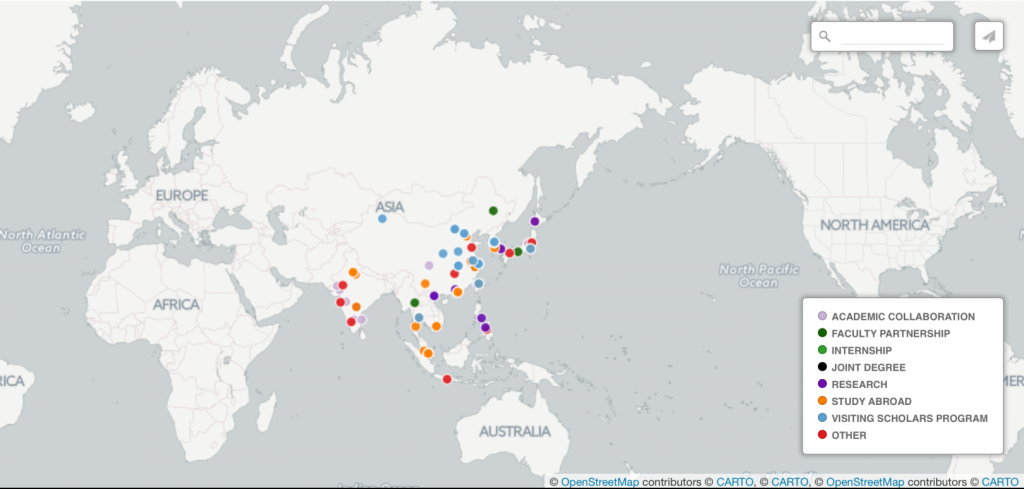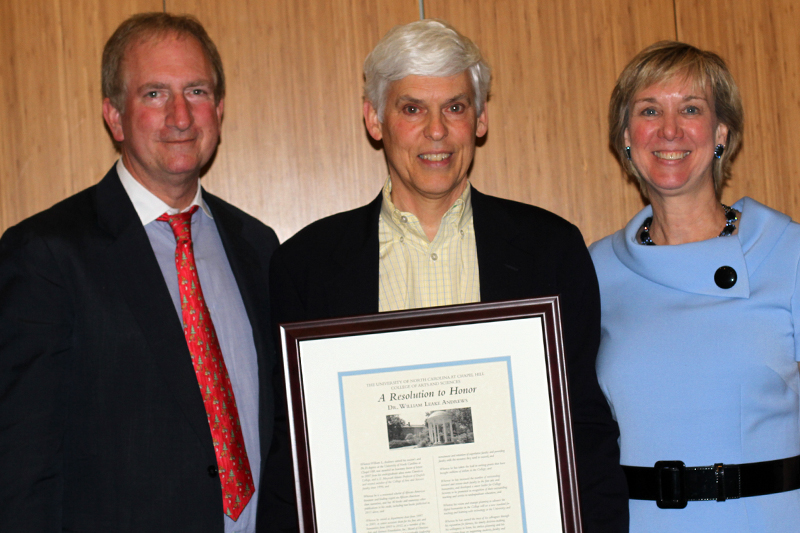
In 2002, UNC’s summer reading committee asked Carl Ernst to recommend a translation of the Qur’an that incoming students could comprehend and discuss at length. Ernst, a religious studies professor, could recommend only one — Michael Sells’ Approaching the Qur’an — because it included 30 short, poetic chapters that he felt would not overwhelm incoming students. The committee took his recommendation, and a lot of people were furious.
Was UNC trying to convert students to Islam? Wasn’t the book choice insensitive and arrogant in light of the 9/11 attacks? Wasn’t discussing the Qur’an tantamount to teaching a specific religion to students?
A controversy erupted. The national press swooped in. There was even a lawsuit to force UNC to abandon its selection. But the university stood firm. More than two thousand incoming students read and discussed Sells’ book without incident. At one session, Ernst eyed reporters standing at the back of a room full of students and said he wished tomorrow’s headline would be, “Students read books, discuss ideas.”
Ernst was confused by the backlash. “People assume that if something is being discussed at the university, then it’s being endorsed,” he says. “That’s not what we’re about. Having students read books is what we do here.”
The summer-reading blowup got to him. “It showed me that misunderstanding the Qur’an was a serious problem,” he says. Radicals take a few lines out of context and promote the most extreme interpretation possible, which gets the most press. Ernst says Westerners are left uninformed and often antagonistic toward a book they know little about.
When publishers approached him about writing a translation of his own, Ernst agreed. But it wouldn’t be a straight translation or a theological introduction to the Qur’an. His book would present the Qur’an as a piece of literature steeped in historical context.
“A lot of people want to know what the Qur’an ‘says’ on particular issues, assuming it has a consistent position,” Ernst says. “The reality is that the Qur’an addresses different audiences and changes its method of communication over time.” The Qur’an — sometimes poetry, sometimes prose — was revealed over 23 years to pagans in Mecca and then to others, including Jews and Christians, in Medina. “So readers need to understand its historical context and the way it was constructed,” he says.
 When Ernst started writing his book, titled How to Read the Qur’an: A New Guide, with Select Translations, he didn’t set out to address any theological arguments, but in a way he’s done just that. He says the Qur’an is full of an ancient literary style that allows readers to pinpoint the central meaning of long and sometimes confusing passages. Using this tool, called ring composition, Ernst found a major theme of the Qur’an that would surprise people who don’t know much about Islam — and even some people who do.
When Ernst started writing his book, titled How to Read the Qur’an: A New Guide, with Select Translations, he didn’t set out to address any theological arguments, but in a way he’s done just that. He says the Qur’an is full of an ancient literary style that allows readers to pinpoint the central meaning of long and sometimes confusing passages. Using this tool, called ring composition, Ernst found a major theme of the Qur’an that would surprise people who don’t know much about Islam — and even some people who do.
Confusing construction
It’s tough to just pick up the Qur’an and start reading. “Anyone who gets though the first 20 pages is very self-disciplined,” Ernst says. “It’s not easy to read.”
That’s because the Qur’an isn’t organized like other books, especially other religious texts. The Gospels, for instance, are chronological accounts of the life and teachings of Jesus. The Book of Revelation is mystical prophecy. The Qur’an, on the other hand, is presented as a series of 114 messages, or suras. And they were not put to paper in chronological order.
The longest suras were revealed toward the end of Muhammad’s life, but they appear at the beginning of the Qur’an. The shortest suras, which are poetic and often cryptic, were revealed at the beginning of Muhammad’s ministry. But they appear at the end of the Qur’an.
“If you start reading the Qur’an at the beginning, it’s sort of like reading a mystery novel by starting with the last chapter,” Ernst says. In How to Read the Qur’an, he sorts all that out.
Ernst shows how the suras evolved over 23 years into long passages of prose full of allusions to the Hebrew Bible, the New Testament, the Talmud, and even the apocryphal writings of Christianity.
Those references can confuse modern readers, Ernst says. For instance, sura 5 mentions the Israelites seeking the Promised Land after fleeing captivity in Egypt. Only two of them enter Canaan — Caleb and Joshua. “But the Qur’an doesn’t mention them by name,” Ernst says. “It only mentions ‘the two.’ This leads me to believe that the initial audience of this sura knew the text of the Hebrew Bible very well.” And that audience, he says, likely included Jews and Christians. Today’s more secular readers, though, might not understand the reference to “the two.”
In his book, Ernst makes sense of such references for readers and shows how the Qur’an would’ve been understood by the people of seventh-century Arabia. This approach is not typical.
For centuries, scholars and theologians have organized the central points of Qur’an according to theme. This way, they can tell readers what the Qur’an “says” about specific issues. But that can be difficult because the Qur’an — if viewed as a single piece of revelation — is full of contradictions and paradoxes. Interpreters had to concoct the so-called doctrine of abrogation to pinpoint what the Qur’an really says about a particular issue.
Abrogation essentially boils down to one verse trumping the validity of another. This, Ernst says, is problematic for several reasons.
In sura 9, for instance, there’s a command for warfare against unbelievers. Today, “unbelievers” could mean anyone who’s not a Muslim. But Ernst and most scholars say Muhammad was referring to war against Meccan pagans who were tormenting Muhammad’s first followers. Muhammad clearly considered Jews and Christians to be believers. He even referred to them as “People of the Book.” Modern-day Islamist radicals don’t make that distinction, and neither do people antagonistic toward Islam.
Through the centuries, many Qur’anic commentators have said this so-called “sword verse” in sura 9 trumps the many verses pertaining to forgiveness for pagan unbelievers and acceptance of Jews and Christians. “Some legal scholars argue that the sword verse abrogates over 100 verses that contain peace treaties and counsels of tolerance,” Ernst says. “I find it rather unsatisfactory that such an extreme reading requires one to disregard large chunks of text.”
Making matters worse, sometimes contradictory statements appear within the same passage. Sura 60, for example, advises believers to avoid becoming allies with those who make war against them. But then it mentions how believers and disbelievers can establish friendships.
How are readers to make sense of this? Some scholars suggest we’re not supposed to. Some say sura 60 is composed of fragments from two different sets of revelation. But the contradictions within one passage force believers to pick which verse to take to heart.
Ernst’s research reveals another explanation for sura 60 and how to approach seemingly contradictory verses. Readers have to understand how the text was structured before interpreting its meaning.
To read the rest of the story, visit http://endeavors.unc.edu/people_of_the_book.
Carl Ernst is the William R. Kenan, Jr., Distinguished Professor of Religious Studies in the College of Arts and Sciences. How to Read the Qur’an: A New Guide, with Select Translations was published by the University of North Carolina Press. Ernst’s other books include Following Muhammad: Rethinking Islam in the Contemporary World.
Story by Mark Derewicz, Endeavors magazine




